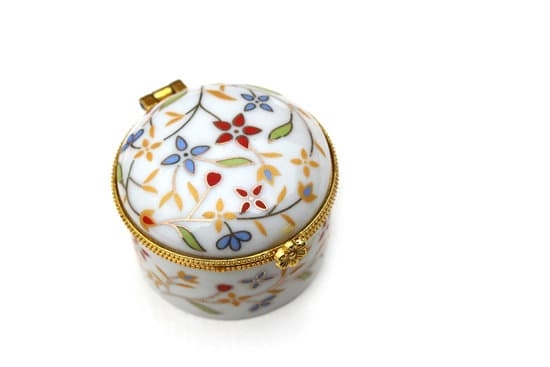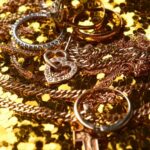Diamond jewelry is often seen as a symbol of timeless beauty and luxury. Many individuals are drawn to the allure of owning a piece of diamond jewelry, but there is often confusion surrounding its long-term value. In this article, we delve into the question: does diamond jewelry appreciate?
There are common misconceptions regarding the appreciation of diamond jewelry. Some believe that all diamonds automatically increase in value over time, while others may assume that it holds no significant value beyond its aesthetic appeal. However, understanding the true nature of diamond jewelry appreciation requires a deeper exploration.
Diamond jewelry appreciation refers to the increase in value that these pieces can experience over time. It is not simply about the monetary worth but also encompasses factors such as rarity, demand, and market trends. Various elements contribute to the appreciation of diamond jewelry, making it an intriguing investment option for individuals seeking both elegance and long-term value.
In the following sections of this article, we will explore the basics of diamond jewelry appreciation and investigate its historical performance. We will also delve into the role of rarity in driving value and analyze global demand and market trends that influence appreciation. Additionally, we will discuss how quality factors such as diamond grading affect appreciation and consider other factors beyond grading that can impact the value of diamond jewelry over time.
Expert opinions from gemologists and industry professionals will be shared to provide valuable insights into this topic. Finally, we will weigh the pros and cons to determine if diamond jewelry truly qualifies as a solid investment.
Join us on this journey as we unravel the enduring allure and investment potential of diamond jewelry while acknowledging its inherent challenges and fluctuations in value.
Understanding the Basics
Diamond jewelry appreciation refers to the increase in value that diamond pieces can experience over time. While many individuals may assume that diamond jewelry is a depreciating asset, the reality is quite the opposite. Diamond jewelry holds its value and can appreciate over the long term, making it a potentially lucrative investment.
One of the key factors contributing to diamond jewelry appreciation is the rarity of diamonds. Diamonds are formed deep within the Earth’s mantle under extreme pressure and heat, making them incredibly rare and difficult to obtain. As a result, their scarcity drives up their value in the market. Unlike other luxury goods that may lose value due to overproduction or changing trends, diamonds maintain their allure due to their limited supply.
Another factor that contributes to diamond jewelry appreciation is the enduring desirability of diamonds across cultures and generations. Diamonds have been prized for centuries for their beauty, durability, and symbolism of love and commitment. This consistent demand has helped sustain and drive up their value over time. Additionally, diamonds’ durability ensures that they can withstand fluctuations in economic conditions or fashion trends, further solidifying their long-term value.
Additionally, factors such as diamond grading play a significant role in determining diamond jewelry appreciation. The 4Cs – cut, color, clarity, and carat weight – are used to assess a diamond’s quality and ultimately its value. Well-cut diamonds with excellent color and clarity tend to command higher prices and have greater potential for appreciation than those with lower grades.
Understanding these basics is essential for individuals considering investing in diamond jewelry. By recognizing the fundamental factors driving appreciations such as rarity and quality, investors can make informed decisions when purchasing diamond jewelry as an investment piece.
| Factor | Effect on Diamond Jewelry Appreciation |
|---|---|
| Rarity | Increases the value due to limited supply |
| Enduring desirability | Maintains consistent demand and value over time |
| Diamond grading (4Cs) | Affects the quality and ultimately the value of the diamonds |
Historical Analysis
As we delve deeper into the topic of diamond jewelry appreciation, it is essential to conduct a historical analysis to understand its past performance. By examining the trends and patterns over time, we can gain valuable insights into the potential appreciation of diamond jewelry.
Throughout history, diamond jewelry has proven to be a reliable investment that appreciates in value. One notable example is the case of the Hope Diamond. Acquired in 1668 by King Louis XIV of France, this breathtaking blue diamond has passed through the hands of various owners before landing at its current home, the Smithsonian Institution. The value of the Hope Diamond has significantly increased over the centuries, reflecting both its rarity and cultural significance.
Another remarkable instance of diamond jewelry appreciation is seen in colored diamonds. These unique gems have consistently shown strong performance in terms of value appreciation. For instance, in 2010, a rare pink diamond called the Pink Star was sold for a record-breaking $71.2 million at an auction in Hong Kong. This impressive sale demonstrates the enduring appeal and investment potential of colored diamonds.
One factor contributing to the historical appreciation of diamond jewelry is its inherent durability and longevity. Unlike other investments that may deteriorate or become outdated over time, quality diamonds can retain their beauty and desirability for generations. This lasting appeal makes them sought after by collectors and investors alike, driving their value upwards.
Overall, when considering historical analysis, it becomes evident that diamond jewelry has a track record of appreciation. Notable examples such as the Hope Diamond and colored diamonds exemplify how these precious gems can appreciate significantly over time. Understanding these past trends can provide valuable insights into the future outlook for diamond jewelry appreciation.
- The Hope Diamond’s valuation over time.
- Record-breaking sales prices for colored diamonds.
- The durability and longevity advantages of diamond jewelry.
The Role of Rarity
The Impact of Diamond Scarcity
One of the key factors driving the appreciation of diamond jewelry is its inherent scarcity. Diamonds are formed deep within the Earth’s mantle over billions of years through intense heat and pressure. The geological conditions necessary for their creation are extremely rare, making diamonds a finite resource. This limited supply contributes to their value in the market and their ability to appreciate over time.
As diamond mines become depleted and new sources become increasingly difficult to find, the scarcity of diamonds continues to increase. This scarcity lends an air of exclusivity and desirability to diamond jewelry, driving up demand and ultimately leading to appreciation in value.
The Concept of Rarity in Diamonds
While scarcity plays a significant role in driving the value of diamond jewelry, it is important to note that not all diamonds are equally rare or valuable. Beyond scarcity, rarity refers to the uniqueness and exceptional qualities of a diamond. Factors such as color intensity, clarity, cut quality, and carat weight all contribute to a diamond’s rarity.
For example, a diamond with an exceptional color grade like fancy vivid blue or fancy intense pink will be significantly more rare and valuable than a white diamond with similar characteristics in terms of clarity, cut, and carat weight. Similarly, diamonds with high clarity grades (such as internally flawless) or unique cuts (such as heart-shaped or emerald-cut) can command higher prices due to their rarity.
Understanding this concept of rarity is crucial for investors or collectors looking for diamond jewelry that has the potential for significant appreciation over time. It allows them to make informed decisions based on a thorough understanding of how certain characteristics can impact both rarity and value.
Investing in Rarity: Long-Term Value Potential
Considering the role that rarity plays in driving the appreciation of diamond jewelry, it becomes evident that investing in rare and unique pieces holds long-term value potential. Over time, as diamond mines become less productive and the supply of certain types of diamonds dwindles, their rarity will only increase. This increase in rarity will likely translate into higher prices and appreciation for those who own these rare pieces.
It is important to note that while rarity is a significant factor, other considerations such as market demand, economic conditions, and overall quality also come into play when determining the value of diamond jewelry. However, by understanding the role of rarity and making informed choices based on rarity and other relevant factors, investors or collectors can increase their chances of benefiting from long-term appreciation in the world of diamond jewelry.
Global Demand and Market Trends
As with any valuable asset, the appreciation of diamond jewelry is influenced by global demand and market trends. Understanding these external factors is crucial for individuals considering diamond jewelry as an investment. By analyzing the current state of the market and identifying major trends, investors can make informed decisions about the potential appreciation of their diamond jewelry.
Analyzing Current Global Demand
One of the key factors that contribute to the appreciation of diamond jewelry is global demand. The demand for diamonds is driven by various factors such as economic conditions, cultural preferences, and evolving fashion trends. It is important to consider both domestic and international demands when assessing the potential growth in value.
Over the years, there has been a significant increase in global demand for diamond jewelry. Emerging markets, particularly countries in Asia such as China and India, have seen a rise in consumer spending power and an increasing desire for luxury goods. This has resulted in a surge in demand for diamond jewelry in these regions, thereby driving up its value. Additionally, established markets like the United States continue to exhibit strong demand for high-quality diamonds.
Identifying Major Market Trends
Market trends play a vital role in determining the appreciation potential of diamond jewelry. Keeping abreast of these trends allows investors to identify opportunities and adapt their investment strategies accordingly.
One notable trend is the preference for ethically sourced diamonds. As consumers become more conscious about sustainable practices, there has been a growing interest in diamonds that are certified as conflict-free or sourced from environmentally responsible mines. Jewelry pieces featuring such diamonds are likely to hold their value better due to increasing consumer awareness and demand for socially responsible products.
Another market trend affecting appreciation is shifting consumer preferences. While traditional round brilliant-cut diamonds have long dominated the market, there has been a rise in popularity for fancy-shaped diamonds like princess cuts or emerald cuts. Investing in diamond jewelry with these trending cuts can potentially lead to greater appreciation as demand for these designs continues to grow.
By carefully analyzing current global demand and market trends, investors can gain valuable insights into the potential appreciation of diamond jewelry. However, it is important to note that market dynamics are subject to change, and there are inherent uncertainties and fluctuations in value. It is advisable to consult with industry experts and conduct thorough research before making any investment decisions.
Quality Matters
When evaluating the appreciation potential of diamond jewelry, one cannot emphasize enough the importance of quality. Diamond grading plays a crucial role in determining the value and subsequent appreciation of these precious gems. The widely recognized 4Cs – cut, color, clarity, and carat weight – serve as essential guidelines in assessing the quality of a diamond.
First and foremost, the cut determines how well a diamond reflects light and showcases its brilliance. A well-cut diamond will exhibit optimal fire and sparkle, making it more desirable and likely to appreciate in value over time. Conversely, a poorly cut diamond will fail to showcase its full beauty, resulting in lower demand and potentially slower appreciation.
Color is another critical factor that impacts both the aesthetic appeal and value of a diamond. The Gemological Institute of America (GIA) grades diamonds on a scale from D to Z, with D representing colorless stones, which are highly valuable due to their rarity. As one moves further down the color scale towards Z, diamonds display increasingly evident yellow or brown tints that can diminish their desirability and subsequent appreciation potential.
Clarity refers to the presence of internal or external flaws within a diamond known as inclusions and blemishes respectively. The GIA grades diamonds for clarity on a scale ranging from Flawless (FL) to Included (I1-I3). Diamonds graded at the higher end of this scale with minimal imperfections are rarer and therefore considered more valuable than those with significant flaws. Consequently, diamonds with better clarity tend to appreciate more significantly over time.
Lastly, carat weight plays an important role in determining both price and rarity. While it may be tempting to believe that larger diamonds always hold superior investment potential, this is not necessarily true. While larger diamonds can command higher prices per carat due to their size alone, smaller stones often boast better color, clarity, and cut grades. As a result, they may have a higher appreciation potential despite their smaller size.
To truly understand the influence of diamond grading on appreciation, it is crucial to consult certified gemologists and industry professionals who possess an in-depth understanding of these factors. They can provide valuable insights and advice when seeking to invest in quality diamond jewelry with long-term appreciation potential.
Other Factors to Consider
Diamond jewelry appreciation is influenced by various other factors beyond the traditional 4Cs (cut, color, clarity, and carat weight). While these factors may not be as easily quantifiable, they play a significant role in determining the value of diamond jewelry over time.
One important factor to consider is brand reputation. Well-established and reputable brands in the diamond industry often command higher prices for their jewelry due to their history of producing high-quality pieces with exceptional craftsmanship.
Consumers are willing to pay a premium for brands that have built a strong reputation for creating unique and timeless designs that withstand changing fashion trends. Brand reputation also instills confidence in buyers, as they know they are purchasing a genuine piece backed by the brand’s expertise and guarantees.
Craftsmanship is another crucial factor that can influence diamond jewelry appreciation. The level of skill and attention to detail invested in creating a piece of jewelry can significantly impact its value. Exquisite craftsmanship can enhance the overall aesthetic appeal and durability of a diamond piece, making it more desirable among buyers. Skilled artisans often incorporate intricate details or innovative techniques that elevate the design, adding an extra layer of uniqueness and artistry.
In addition to brand reputation and craftsmanship, provenance or historical significance can also contribute to the appreciation of diamond jewelry. Pieces with notable histories or connections to important events or individuals tend to attract collectors’ interest, leading to potential price increases over time. Historical diamonds with stories attached to them often become part of museum exhibits or private collections, which further drives up their demand and value.
Overall, while the 4Cs serve as essential criteria for assessing diamond quality and value, considering other factors like brand reputation, craftsmanship, and provenance can provide a more comprehensive understanding of a diamond’s appreciation potential. Collectors and investors should take these elements into account when evaluating the long-term value of diamond jewelry.
| Factors to Consider | Description |
|---|---|
| Brand Reputation | Well-established and reputable brands often command higher prices due to their history of creating high-quality pieces. |
| Craftsmanship | The level of skill and attention to detail invested in creating a piece can significantly impact its value. |
| Provenance | Diamonds with notable histories or connections to important events or individuals tend to attract collectors’ interest. |
Expert Opinion
When it comes to understanding the long-term value of diamond jewelry, insights from experts in the field can provide valuable guidance. Gemologists and industry professionals bring their knowledge and experience to the table, shedding light on the factors that contribute to diamond jewelry appreciation.
According to renowned gemologist Dr. Susan Harper, “Diamond jewelry has consistently shown appreciation over time due to its inherent qualities and enduring appeal.” She explains that diamonds are one of the hardest natural substances on Earth, making them resistant to wear and tear. This durability ensures that diamond jewelry can be passed down through generations, further enhancing its sentimental value and potential appreciation.
Industry professionals also emphasize the importance of rarity in driving diamond jewelry appreciation. Sharon Thompson, a veteran diamond trader, notes that “diamonds are formed deep within the Earth’s mantle over billions of years, making them incredibly scarce.” As demand for diamonds continues to rise globally, especially in emerging markets like China and India, this scarcity becomes even more pronounced. Limited supply coupled with growing demand strengthens the investment potential of diamond jewelry.
Additionally, both gemologists and industry professionals underscore the significance of diamond grading in determining value. The 4Cs – cut, color, clarity, and carat weight – play a crucial role in assessing a diamond’s quality. Edward Turner, a respected gemologist, emphasizes that “a well-cut diamond with high clarity and color will command premium prices in the market.” These quality factors not only enhance a piece’s aesthetic appeal but also contribute significantly to its appreciation potential.
Is Diamond Jewelry a Solid Investment? Weighing the Pros and Cons
One of the questions often asked by those considering investing in diamond jewelry is whether it is a solid investment. While diamonds are known for their beauty and luxury, their status as an investment can be a subject of debate. In this section, we will explore the pros and cons of using diamond jewelry as an investment option.
First, let’s consider the potential advantages of investing in diamond jewelry. One of the primary benefits is that diamonds have historically shown appreciation in value over time. The demand for diamonds has remained relatively stable, and scarcity plays a significant role in driving up their value. Additionally, diamond jewelry can also serve as a portable and tangible asset that can be easily stored or passed down through generations.
However, it is important to weigh these advantages against some potential drawbacks. One notable limitation is that unlike other traditional investments such as stocks or real estate, it may be challenging to sell diamonds quickly or at a fair price when immediate liquidity is needed. Also, the value of diamond jewelry can be subjective and fluctuate depending on factors such as market trends, fashion preferences, or shifts in consumer behavior.
Furthermore, investing in diamond jewelry requires careful consideration of various factors such as quality, authenticity, and market conditions. Diamond grading plays a crucial role in determining the value of these gemstones, with factors like cut, color, clarity, and carat weight significantly impacting their worth. Additionally, other elements such as brand reputation and craftsmanship can influence future appreciation potential.
Conclusion
In conclusion, the exploration of diamond jewelry appreciation has shed light on the lasting value that these precious gems possess. Throughout this article, we have debunked common misconceptions and delved into the factors that contribute to the appreciation of diamond jewelry over time.
Through historical analysis, it has become clear that past performance provides evidence of significant appreciation in diamond jewelry. Concrete examples have demonstrated how certain pieces have shown remarkable increases in value, bolstering the notion that diamond jewelry can be a lucrative investment.
The rarity of diamonds also plays a crucial role in their appreciation. As scarcity drives up demand, the value of diamonds naturally increases. This concept of rarity highlights the uniqueness and desirability of diamonds, making them highly sought-after by collectors and investors alike.
Furthermore, global demand and market trends heavily influence the appreciation of diamond jewelry. Analyzing current demand and staying informed about market trends is crucial for those considering diamond jewelry as an investment. Being aware of shifts in consumer preferences and emerging markets can help investors make informed decisions that maximize potential returns.
Quality is another essential factor affecting diamond jewelry appreciation. Diamond grading based on the 4Cs (cut, color, clarity, and carat weight) determines value and impacts long-term appreciation potential. It is imperative to thoroughly understand these grading criteria when purchasing diamond jewelry for investment purposes.
Additionally, beyond the 4Cs, other factors such as brand reputation and craftsmanship can greatly influence appreciation. Well-established brands with a legacy of excellence tend to command higher values over time. Superior craftsmanship enhances the aesthetic appeal and durability of a piece, making it more likely to appreciate in value.
Insights from gemologists and industry professionals further affirm the lasting value of diamond jewelry. Their expert opinions provide valuable guidance for investors looking to navigate this complex market successfully. By incorporating their wisdom and predictions for the future into investment strategies, individuals can capitalize on opportunities within the industry.
While it is undeniable that diamond jewelry holds appreciative value, it is important to acknowledge the inherent uncertainties and fluctuations in its market. Like any investment, there are risks involved, and returns are not guaranteed. However, with diligent research, educated decision-making, and a long-term perspective, diamond jewelry holds the potential for significant appreciation.
In summary, diamond jewelry possesses lasting value due to its historical performance, rarity, global demand and market trends, quality standards, and additional factors such as brand reputation and craftsmanship. Although investing in diamond jewelry comes with risks, the potential rewards should not be overlooked. By keeping informed about industry developments and seeking expert opinions, investors can make informed decisions that maximize the appreciation potential of their diamond jewelry investments.
Frequently Asked Questions
Does diamond jewelry hold its value?
Diamond jewelry has long been considered a valuable asset, and while it does hold some value, it is important to note that its value may not necessarily appreciate over time. The value of diamond jewelry can depend on various factors such as the quality of the stone, its cut, color, clarity, and carat weight, as well as market demand and trends.
While diamonds may retain their value better than other types of jewelry or fashion accessories, it is crucial to thoroughly research and assess the specific characteristics and market conditions before determining the potential resale value.
Do diamonds appreciate over the years?
While diamonds are often associated with being a good investment due to their perceived timeless allure, it cannot be universally said that they appreciate over the years. The appreciation of diamonds largely depends on several factors such as the rarity and desirability of certain diamond characteristics which may fluctuate with changes in fashion trends and consumer preferences. Additionally, economic factors also play a role in diamond prices.
It is worth noting that many people purchase diamond jewelry for sentimental reasons rather than solely for investment purposes. Therefore, it is essential to consider personal preferences when evaluating whether or not diamonds appreciate.
How much have diamonds appreciated in 10 years?
The appreciation of diamonds over a ten-year period can vary significantly depending on numerous factors mentioned earlier. Historical data shows that diamond prices have experienced fluctuations in the past decade due to various influences on supply and demand dynamics within the industry.
However, pinpointing an exact percentage of how much diamonds have appreciated in ten years would require analyzing specific segments within the diamond market for comprehensive accuracy since different types of diamonds exhibit differing appreciation rates based on their unique qualities and characteristics. It is advisable to consult professionals or conduct thorough research using reliable sources in order to obtain accurate information about specific segments within the industry for making informed assessments about appreciation rates over a ten-year timeframe.

Welcome to my jewelry blog! My name is Sarah and I am the owner of this blog.
I love making jewelry and sharing my creations with others.
So whether you’re someone who loves wearing jewelry yourself or simply enjoys learning about it, be sure to check out my blog for insightful posts on everything related to this exciting topic!





